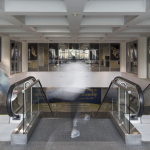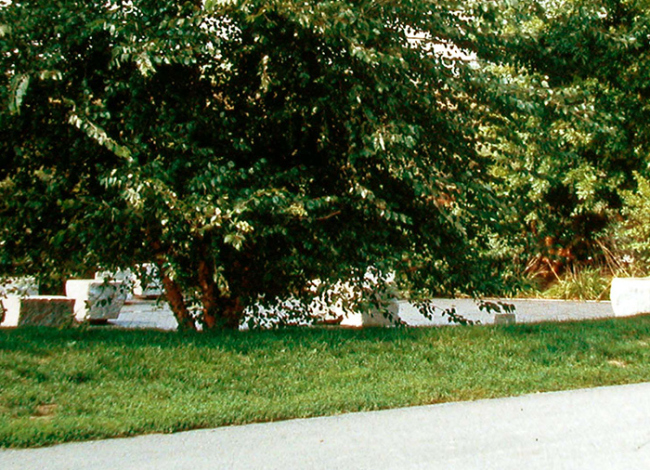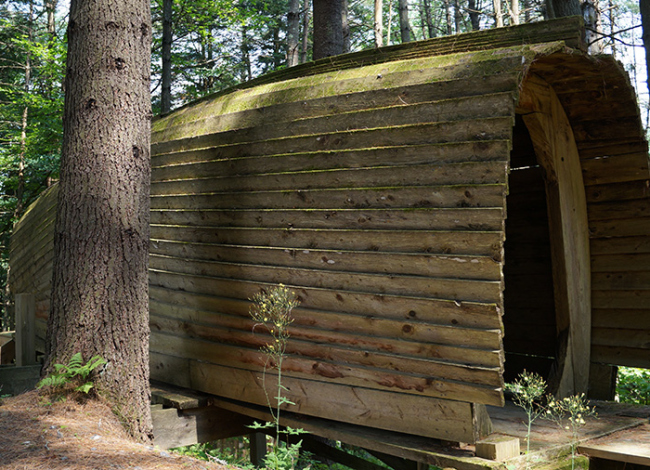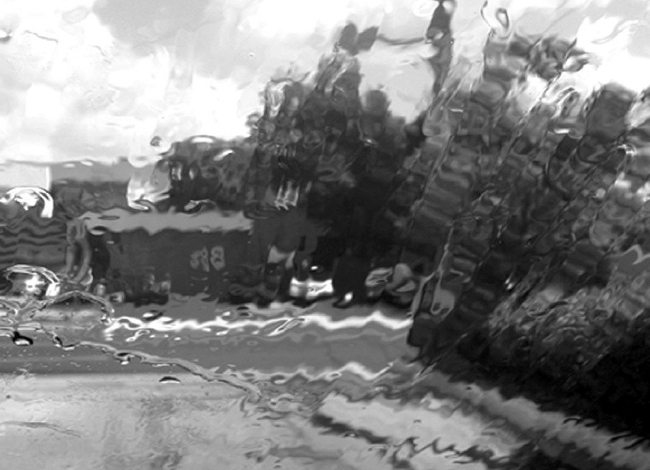“Artist Ed Levine has worked with the Pennypack Environmental Center Advisory Council to develop the public art project Embodying Thoreau: dwelling, sitting, watching, for Pennypack Park in Northeast Philadelphia. The project was inspired by the nineteenth-century author of Walden, Henry David Thoreau. The artist was struck by the similarity between Thoreau’s values and those expressed by the park community: as Levine puts it, Thoreau “saw and expressed the dynamic relationship between culture and nature.” The project features a series of wooden structures, “between sculpture and architecture” that explore different aspects of humanity’s relationship to nature. Located at different sites in the park, the structures are integrated into the educational programs of the Pennypack Environmental Center but also invite independent exploration.
The first structure, Thoreau’s Hut, emphasizes humans’ place within the natural world. Echoing the dimensions of Thoreau’s cabin at Walden Pond in Massachusetts, the structure is open to the elements and contains seating and a “symbolic hearth” to represent the hearth in Thoreau’s cabin. At another site nearby, three Benches place visitors in a social and personal relationship to the park. Facing one another, the Benches suggest a family. Two of the three Benches are relatively big for their intended occupants, Levine explains, making “the sitter aware of the scale of the body in contrast to the surroundings.” Finally, a Bird Blind encourages visitors to investigate human relationships with other animal life. To convey both our connection with and our separation from other creatures, Levine used two structural systems for the Bird Blind: the interior or “human side” reflects standard architecture, but the exterior is woven like a nest. “The two systems,” he notes, “establish the different worlds we inhabit and the means through which we form these worlds.” – Association for Public Art, 2003.
Initiated by the Fairmount Park Art Association (Now the Association for Public Art) through New•Land•Marks: public art, community, and the meaning of place.
Owned by the City of Philadelphia
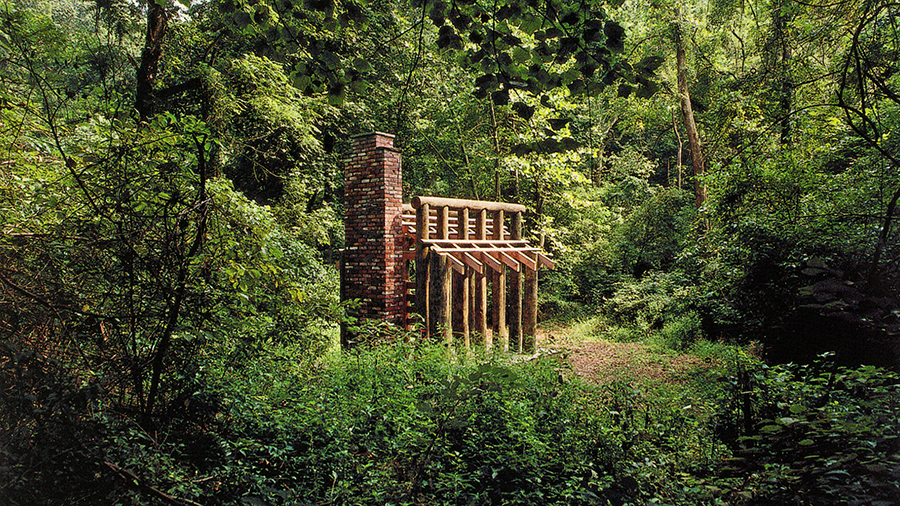
Pine, cedar, recycled brick, flagstone, and stainless steel on concrete pad.
Height: 15′ 3″; Width: 10′; Depth: 15′
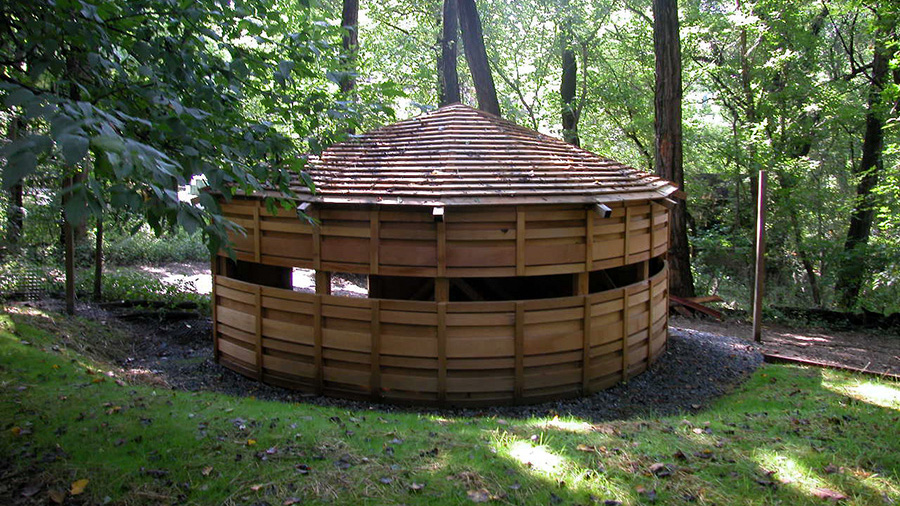
Cedar and stainless steel on concrete pad. Height: 9′ 8 1/4″; Width: 19′ 3 5/16″; Depth: 9′ 5″
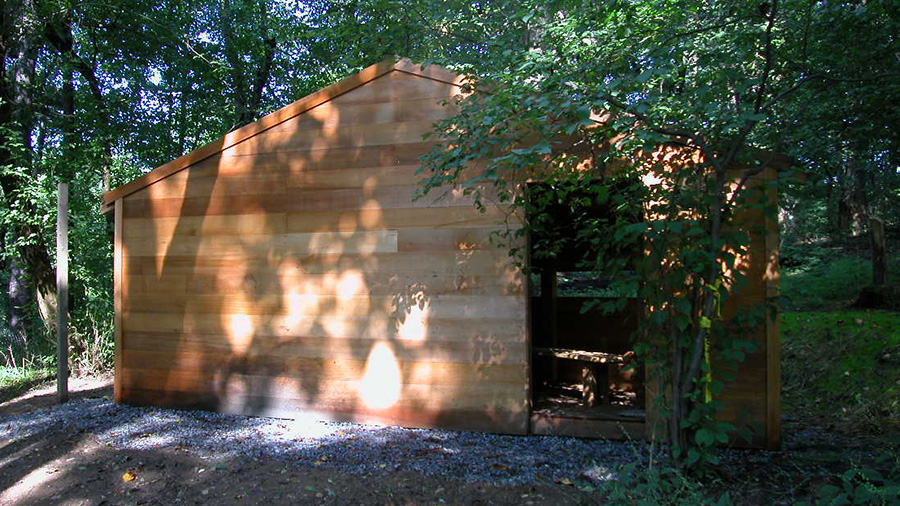
Cedar and stainless steel on concrete pad. Height: 9′ 8 1/4″; Width: 19′ 3 5/16″; Depth: 9′ 5″
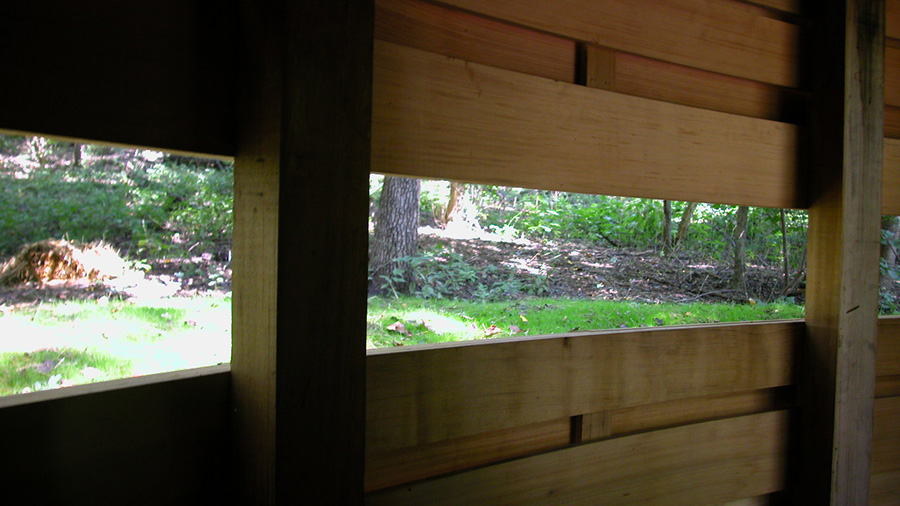
Cedar and stainless steel on concrete pad. Height: 9′ 8 1/4″; Width: 19′ 3 5/16″; Depth: 9′ 5″
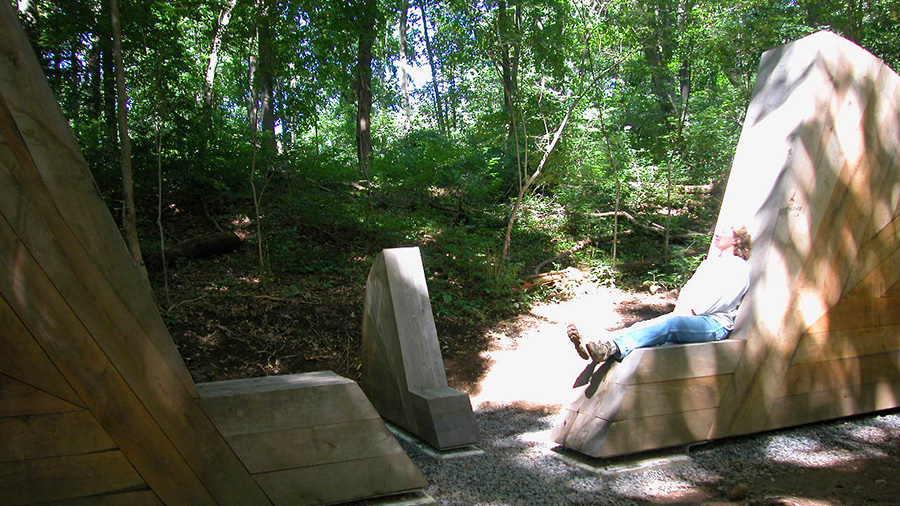
Wood and Copper
Height: 12' 8"; Width: 9' 4"; Depth: 2' 1"

Wood and Copper
Height: 12' 8"; Width: 9' 4"; Depth: 2' 1"
